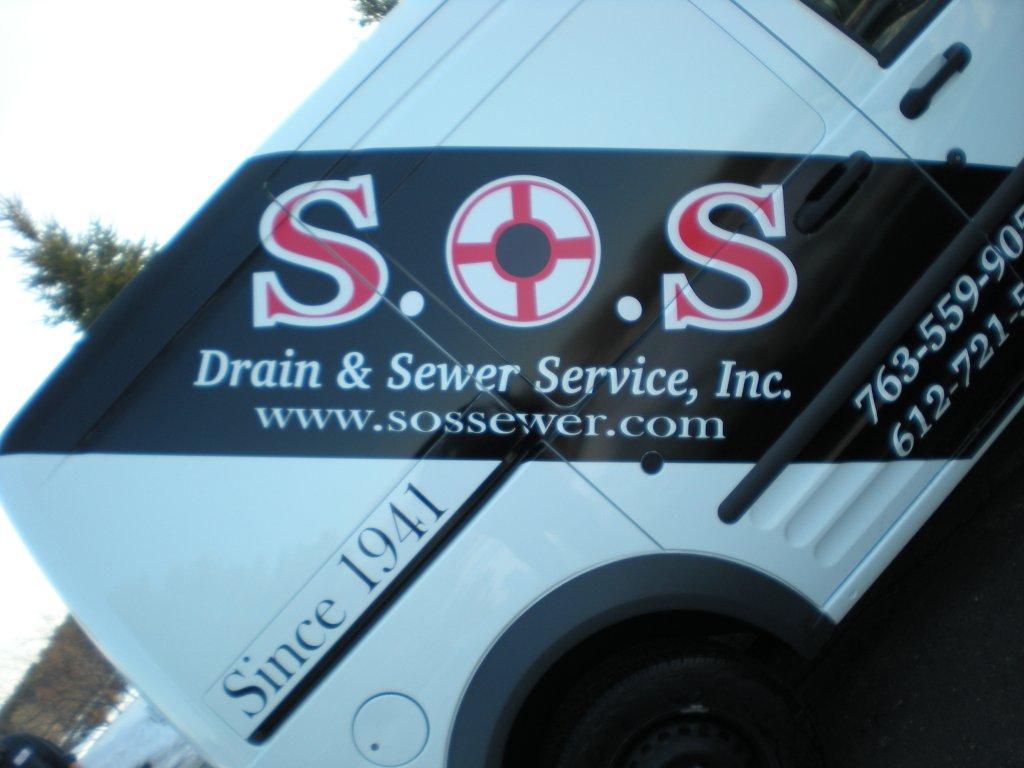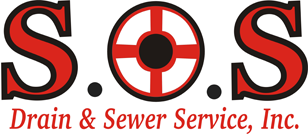Save 10%
on your First
Drain Cleaning.
A+
Rated by
BBB

A Trusted
2nd Opinion
Service Provider


Are there any preventive measures to avoid sewer line clogs?
Yes, there are several preventive measures you can take to minimize the risk of sewer line clogs and maintain the proper functioning of your plumbing system. Here are some effective preventive measures:
- Proper Disposal of Waste: Avoid flushing or rinsing items down the drain that can cause clogs, such as grease, oil, fat, coffee grounds, food scraps, paper towels, sanitary products, diapers, and other non-flushable items. Dispose of these materials in the appropriate trash receptacles.
- Use Drain Screens or Strainers: Install drain screens or strainers in sinks, showers, and tubs to catch hair, soap residue, food particles, and other debris. Regularly clean and empty the screens or strainers to prevent buildup.
- Regular Maintenance: Schedule regular maintenance for your plumbing system, including sewer line inspections and cleaning. A professional drain cleaner can assess the condition of your sewer line, identify potential issues, and perform preventive maintenance to keep it clear and flowing smoothly.
- Tree Root Management: If you have trees or shrubs near your sewer line, monitor their root growth. Tree roots can infiltrate sewer pipes, leading to blockages and damage. Consider regular tree root pruning or consulting with a professional arborist to manage root growth near your sewer line.
- Educate Household Members: Teach everyone in your household about proper disposal practices and the importance of not flushing or pouring substances that can cause clogs. Encourage responsible habits to prevent blockages from occurring.
- Professional Inspections: If you notice recurring slow drains, gurgling sounds, foul odors, or other signs of sewer line issues, consult with a professional drain cleaner for a thorough inspection. Early detection and timely repairs can prevent further damage and costly repairs in the future.
A Trusted
Service for the Last
75 Years


Are there any preventive measures to avoid sewer line clogs?
Yes, there are several preventive measures you can take to minimize the risk of sewer line clogs and maintain the proper functioning of your plumbing system. Here are some effective preventive measures:
- Proper Disposal of Waste: Avoid flushing or rinsing items down the drain that can cause clogs, such as grease, oil, fat, coffee grounds, food scraps, paper towels, sanitary products, diapers, and other non-flushable items. Dispose of these materials in the appropriate trash receptacles.
- Use Drain Screens or Strainers: Install drain screens or strainers in sinks, showers, and tubs to catch hair, soap residue, food particles, and other debris. Regularly clean and empty the screens or strainers to prevent buildup.
- Regular Maintenance: Schedule regular maintenance for your plumbing system, including sewer line inspections and cleaning. A professional drain cleaner can assess the condition of your sewer line, identify potential issues, and perform preventive maintenance to keep it clear and flowing smoothly.
- Tree Root Management: If you have trees or shrubs near your sewer line, monitor their root growth. Tree roots can infiltrate sewer pipes, leading to blockages and damage. Consider regular tree root pruning or consulting with a professional arborist to manage root growth near your sewer line.
- Educate Household Members: Teach everyone in your household about proper disposal practices and the importance of not flushing or pouring substances that can cause clogs. Encourage responsible habits to prevent blockages from occurring.
- Professional Inspections: If you notice recurring slow drains, gurgling sounds, foul odors, or other signs of sewer line issues, consult with a professional drain cleaner for a thorough inspection. Early detection and timely repairs can prevent further damage and costly repairs in the future.
Save 10%
on your First
Drain Cleaning.
A+
Rated by
BBB

A Trusted
2nd Opinion
Service Provider

A Trusted
Service for the Last
75 Years

What methods are used for sewer line cleaning?
Several methods are commonly used for sewer line cleaning, depending on the specific needs and conditions of the sewer system. Here are some of the most common methods:
- Hydro Jetting: Hydro jetting is a highly effective and efficient method that uses high-pressure water to clear blockages and clean the interior of sewer lines. A specialized machine delivers a powerful stream of water through a nozzle, which can break up obstructions, remove debris, and thoroughly clean the pipe walls.
- Mechanical Rodding: Mechanical rodding involves the use of a flexible rod with attachments, such as a cutting head or auger, to break up clogs and remove blockages. The rod is inserted into the sewer line and rotated to dislodge and push out the debris.
- Drain Snaking: Drain snaking, also known as auguring, utilizes a long, flexible cable with a specialized tip or cutting head. The cable is inserted into the sewer line and rotated to break apart or retrieve blockages. Drain snaking is particularly effective for clearing common obstructions like tree roots or solid debris.
- Chemical Cleaning: Chemical cleaning involves the use of specific chemical solutions or treatments to dissolve or break down clogs and blockages. However, chemical cleaning is typically used for minor blockages or as a preventive maintenance method. It is not suitable for severe or complex issues.
- Root Removal: In cases where tree roots have infiltrated the sewer line, specialized equipment such as a root cutter or root saw may be used to remove the roots and restore proper flow.
- Video Inspection: Before and after cleaning, a video inspection may be conducted using a sewer camera to assess the condition of the sewer line, locate blockages or damage, and ensure thorough cleaning.
How often should sewer lines be cleaned?
The frequency at which sewer lines should be cleaned can vary depending on various factors. While there is no one-size-fits-all answer, here are some general guidelines:
As a preventive measure, it is recommended to have sewer lines professionally cleaned every 1 to 2 years. This routine cleaning helps remove accumulated debris, sediment, and potential blockages before they become major issues.
If you live in an older property with an aging sewer system, more frequent cleaning may be necessary. Older pipes may be more susceptible to corrosion, root intrusion, or sediment buildup, requiring more frequent.
The number of occupants in a property and their usage patterns can impact the frequency of sewer line cleaning. Higher occupancy or properties with heavy water usage may require more frequent cleanings to prevent clogs and backups.
It’s important to pay attention to signs that indicate a sewer line issue. If you experience recurring drain clogs, slow drains, foul odors, gurgling sounds, or sewage backups, it may be an indication that your sewer line needs cleaning sooner.
What should I do if my sewer line keeps getting clogged?
If you are experiencing persistent sewer line clogs despite taking preventive measures, it’s important to take appropriate action to address the issue. Here are the steps you should consider:
- Contact a Professional Drain Cleaner: When dealing with recurring sewer line clogs, it’s best to consult with a professional drain cleaner. They have the expertise and tools necessary to assess the situation accurately and provide effective solutions.
- Schedule a Sewer Line Inspection: The drain cleaner will likely recommend conducting a thorough sewer line inspection to identify the underlying cause of the recurring clogs. This can be done using a sewer camera that is inserted into the pipes to visually inspect the condition of the sewer line, locate blockages, and determine the appropriate course of action
Your Routine Minneapolis Sewer Cleaning Experts
You also have the option of calling us even before you have a clog or other issue. We can establish a maintenance plan with you that ensures your sewer lines remain clean for the long-term. This prevents any future repairs that could be rather costly. For instance, it is possible for tree roots to infiltrate the outside line. If those tree roots are removed before they can be, then you are avoiding a very expensive pipe repair or replacement. We use cameras and other equipment to inspect your pipes so that potential issues can be found and stopped and rectified before they become something serious. It is this ability to save our customers headaches and money that we have so many repeat clients throughout the Twin Cities.


Sewer Cleaning Twin Cities
The sewer lines in your home are designed to carry waste away so that you don’t have to smell it or see it. You flush a toilet or allow water to drain down a drainpipe and you forget about it. You forget about it until something happens that forces you to remember and, many times, such reminders are not a good thing.
Those reminders can take the form of sewage in your floor or in your sinks. You could have an awful smell to deal with or even harmful sewer gasses to contend with. At S.O.S. Drain & Sewer Cleaning Services, we will clean your sewer drain so it keeps running the way that it should. Our Minneapolis & St. Paul drain & sewer cleaning experts will evaluate the issue and rectify it as soon as possible so your sewer pipes are running like new.
The sewer in a home needs to be cleaned once in a while. One that isn’t can have a great deal of buildup that eventually leads to a clog that can result in expensive issues. If you are in a situation where you need a cleaning right now or you just want some maintenance performed, S.O.S. Drain & Sewer Cleaning can help you. To learn more, call our Anoka office at 763-413-4720, our St. Paul office at 651-645-8383, our Bloomington office at 952-835-7677, or our Minnetonka office at 763-559-9050.





